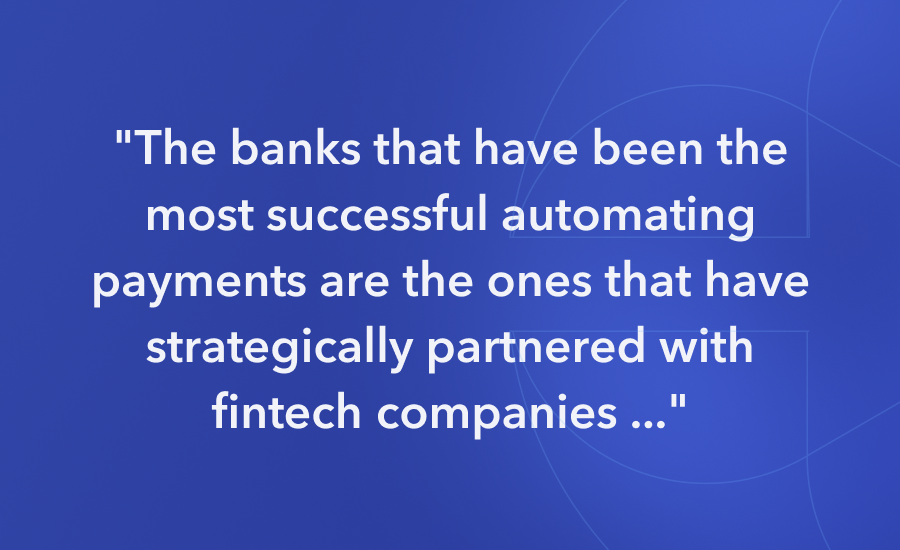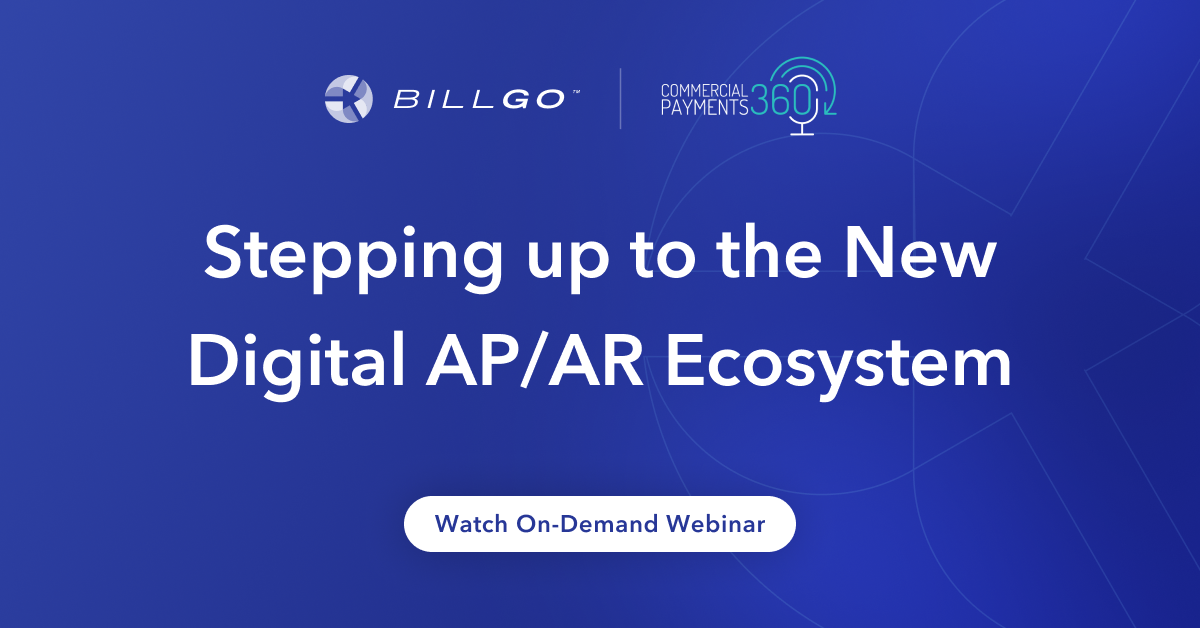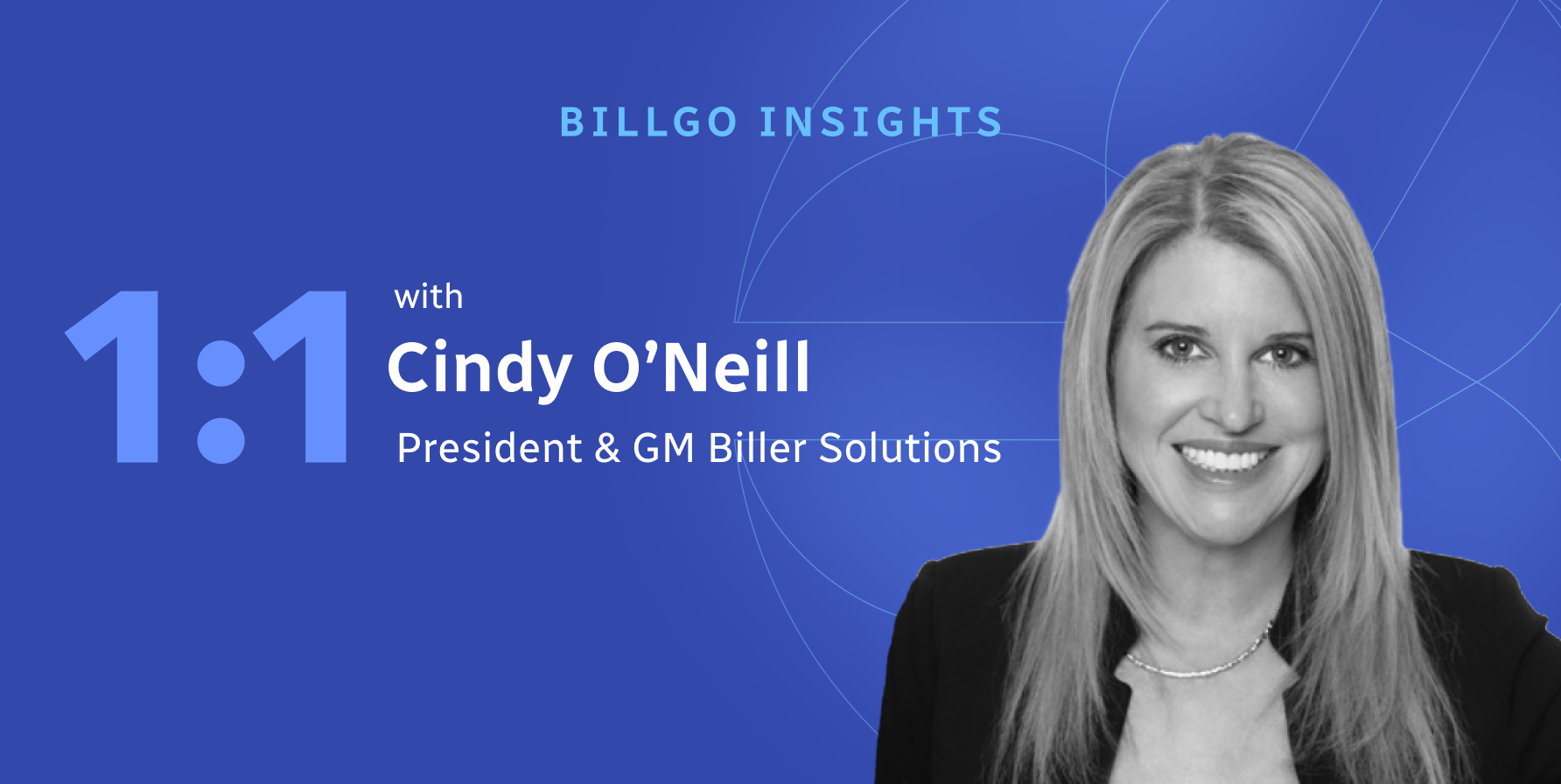Traditional accounts payable/accounts receivable (AP/AR) systems are transforming; however, legacy processes—and legacy mindsets—remain deeply-rooted in an industry that needs to fully embrace the speed, security and convenience of virtual cards.
We sat down with Cindy O’Neill, a leader in the payments space for nearly 20 years, to understand why. In her current role as the President and GM of BillGO’s Biller Solutions, she is responsible for mitigating the friction associated with electronic payment acceptance, specifically virtual cards. Prior to joining BillGO, O’Neill was the the President of Priority Commercial Payments, where she was responsible for developing the Commercial Payments Exchange (CPX) integrated payables platform.
We talked with her about the barriers slowing virtual card adoption, the art and science of supplier enablement, “co-opetition” between financial institutions (FIs) and fintechs and how BillGO is solving the decades-long problem of electronic payment acceptance.
Are virtual cards a priority in most organization’s electronic payment strategy?
For the most part, virtual cards are important for buying organizations but - from a supplier’s perspective - virtual cards haven’t been a priority due to the cost of acceptance and the friction that has historically existed around payment reconciliation. But COVID has impacted that: we are starting to see a shift where virtual cards are becoming a key focus for both buyers and suppliers within key verticals.
So, COVID has accelerated virtual card adoption?
Absolutely. Because of the pandemic, people were no longer able to go to their offices to collect their mail and deposit check payments, so AR departments had to look for alternatives.
Sectors that traditionally have not been enthusiastic about virtual cards, such as airlines, government agencies and not-for-profits, suddenly had to be open to all forms of electronic payments - including virtual card payments. Suppliers were willing to pay the interchange fees to ensure they were managing their days sales outstanding (DSO) and improving cash flow.
I personally believe suppliers will continue the trajectory of accepting card payments post-COVID now that they’ve gotten a taste of the benefits firsthand.
Why did it take a pandemic to see virtual card adoption rates rise? Virtual cards aren’t new, so why have we been slow to see adoption in recent years?
The industry has worked hard to offer discounted interchange rates to ease the burden of acceptance and provide value-add services to make adoption easier, but unfortunately these programs and services have not always been implemented or executed effectively.
That’s why supplier outreach and enablement is so critical; it boils down to better explaining the benefits of card acceptance so suppliers see the value of virtual card payments.
Why hasn’t there been more focus on virtual card adoption strategies?
There has been a moderate effort in the industry during the last decade to show the value propositions and work with suppliers to ease their concerns and apprehensions about virtual cards, but it’s not where it should be considering the opportunity.
This is due in part because buyers don’t want to force their suppliers to accept virtual cards, for a variety of reasons, or they don’t have the buying power to do so. However, I suspect the bigger challenge is a lack of industry alignment and focus to address those barriers suppliers continue to encounter.
So, this isn’t something new?
When I presented at CPI almost a decade ago, we were identifying the same virtual card barriers as we continue to see today. As I said before, the focus for at least the last 10 years has been on tools for the AP side and less so about the AR side.
There have been a handful of financial institutions (FIs) and fintechs that are focused on the supply side, but there are still some well-known institutions that have no supplier enablement function within their organization—which is pretty surprising.
I can’t say for certain why; maybe they don’t recognize the value, but this goes back to the lack of understanding and alignment around the benefits of virtual cards. A decade later, and it’s still an education process from all parties in terms of what a virtual card is, how it is used, how it stacks up against other payment types, and, most importantly, the value it offers both buyers and suppliers.
Can FIs, processors, issuers, etc., overcome this lack of enablement function?
They have a choice: build or buy. They can either start the function within their organization or outsource to organizations specializing in supplier-outreach campaigns, because—for many— it’s not an easy function to build from the ground up.
Why?
There’s a science to supplier enablement, and companies like BillGO have invested heavily in this area so institutions don’t have to. The process itself is very methodical with a technology component.
There are many “networks” that have emerged with proprietary supplier databases that promote the ability to automate the receipt of virtual card payments. Suppliers not enrolled in a network are targeted for adoption through outreach campaigns. Effective and scalable supplier-enablement programs require knowing how to script the outreach component—whether it's an email or a phone call—based on the payment amount, which vertical the supplier is in, terms, etc. Also, the ability to aggregate payments, eliminating the burden of repetitive phone calls or emails to the same supplier, is key.
For institutions that don’t have this function in place, it can be much easier, faster and more cost-effective to leverage a fintech like BillGO to handle this function for them.
Are there any technologies or processes that can help streamline virtual card adoption?
Suppliers want to eliminate friction but often card programs add another manual step in the process.
Adequate integration with ERP systems is critical to streamlining the experience for the supplier. Today, virtual card acceptance is a multi-step process where the supplier receives the payment and either key enters it into their POS device or virtual workstation. They then have to manually reconcile it within their ERP. Ultimately, as an industry, we need to get to a truly touchless, frictionless transaction from the initiation and receipt of the invoice, to the initiation and receipt of the payment, supporting reconciliation on both sides.
How close is the industry to having that “touchless” experience?
There’s been a shift recently with the industry recognizing the need to focus more on the supplier side of the equation. There are some companies that have made it easier to receive and reconcile payments without needing to have a layered, multi-touch process. But, really, BillGO is one of the few in the industry doing this today.

You mentioned fintech companies like BillGO stepping in to solve this decade-long problem. Why haven’t FIs figured it out?
There are only a few FIs that are able to work in an agile environment and innovate and deliver as quickly as fintechs can, so most FIs are at a competitive disadvantage. The FIs that have been successful automating payments are the ones strategically partnering with fintechs offering these services. I call it “co-opetition,” where banks and fintech companies work together to deliver a solution for buyers and suppliers that improves access, capabilities and experiences for everyone.
Like BillGO?
BillGO is leading the effort to finally solve the problem of electronic payment adoption, specifically virtual cards. We use technology to facilitate deep integrations with suppliers in order to identify and target parties who are resistant to virtual card payments.
BillGO also delivers value-added services that make virtual cards a touchless, easier option for suppliers so they don’t have to think twice about taking a virtual card payment, as well as making it easier for them to bill their customers who can in turn make payments electronically.
Everything we are delivering is intended to take the friction out of the process for underserved billers. We’re working to build a fully integrated, end-to-end solution to solve problems facing both sides of the market.
Throughout my career, I’ve been recognized for building highly productive teams that deliver strategic, client-focused solutions, and that’s exactly what I’ve done here. I’ve assembled a powerhouse team that has experience on both the issuing and acquiring side, and we’re all laser-focused on breaking down the barriers to virtual card adoption once and for all.
Next Steps
For more insights from O’Neill, check out this Commercial Payments 360 panel discussion she hosted with other leading industry experts, executives and thought leaders. They discussed the challenges and opportunities in the new digital AP/AR ecosystem. where faster and real time payments and receivables are shrinking DPO/DSO and enhancing working capital for all.

Contact BillGO if you are interested to learn how Biller Solutions is streamlining payments for businesses by solving longstanding hassles like managing paper checks, tracking electronic payments and reconciling payments.

